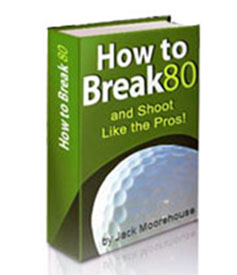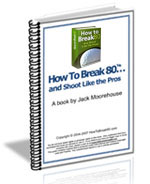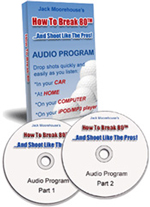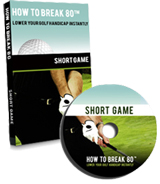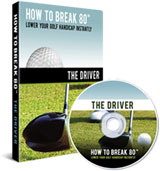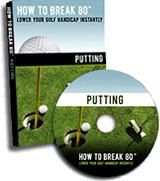
How To Become A Scoring Machine By Jack Moorhouse Every golfer misses greens. If you can't get the ball near the hole (or in it) in this situation, your scores will skyrocket. However, if you can get up and down, you'll keep those bogeys and double bogeys at bay. It's called scoring. And the key to scoring is assessing the lie, selecting the right shot, and deciding how hard to hit the ball. Scoring is what separates players with low golf handicaps from those with high golf handicaps. It's also what separates Tiger, Phil, and Vijay from the rest of the players on the PGA tour. If you're serious about improving your game, becoming a scorer is the best—and fastest—way of doing so. Mastering three basic chip shots—the high floater, the mid-trickler, and the low runner—turns you into a scoring machine. Three Questions -What type of shot do I hit? The answers to these questions depend on several factors—your distance from the pin, your lie, and your confidence in your chipping. You can chip with any club from a 5-iron to the sand wedge. Just make sure you don't lob the ball in the air and put backspin on it. A well-stuck chip shot carries for a short distance, hits the ground, and then runs, as I tell students who take my golf lessons. Muscle memory developed from practice and taking practice swings to test the resistance of the grass tells you how hard to hit the shot. The type of shot depends on the lie and the distance from the hole. The High Softie
The Mid-Trickler The key to this shot is distance control. Pick a spot where you want the ball to land, then aim for it. Leave enough room to let the ball run. It's crucial you don't add or subtract loft from the club, which reduces or increases distance, respectively. A slight forward lean of the shaft and level shoulders at address allows you to maintain the club's true loft. Set up with the ball positioned toward the center of your stance. The Low Runner The key to the low runner is the tilt of the front shoulder. Position the front shoulder lower than your back shoulder and the ball back in your stance, ensuring forward shaft lean. It reduces the loft on your club and helps you use the leading edge to "pinch" the ball crisply, creating a shallow impact and preventing the ball from climbing up the club. Tilting your shoulder also creates a forward displacement of weight, which aids your technique. Practice these three shots until you master them. They'll help you recover for missed greens. They'll also help you turn yourself into a scoring machine—the key to quickly reducing your golf handicap and achieving your full potential as a golfer.Jack Moorehouse is the author of the best-selling book "How To Break 80 And Shoot Like The Pros." He is NOT a golf pro, rather a working man that has helped thousands of golfers from all seven continents lower their handicap immediately. He has a free weekly newsletter with the latest golf tips, golf lessons and golf instruction.
|
|
